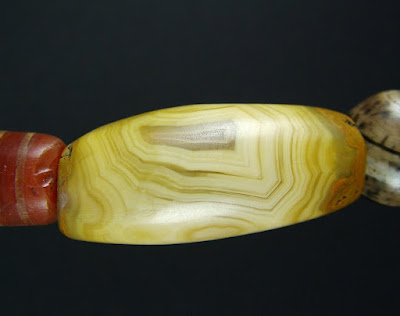Wednesday, December 31, 2008
Thursday, December 18, 2008
Wednesday, December 17, 2008
Old counters with stylised cloud design.
Old pair of mala counters with vajra (dorje) and bell (drilbu)
Silver counters with turquoise and coral inlay.
Old counters with Vajra
Old counters with a Bell or Drilbu
Old silver counters with Tibetan cloud design
Old counters with Tibetan cloud design
Old counters with vajra
Old counters with vajra
Old counters with coral inlay
Old counters with vajra (front).
Old silver counters with stylised vajra inlaid with red coral.
Counters are primarily used to help keep track of mantra and prayer recitations and are usually strung as a pair. One set will keep track of each hundred recitations, up to 1000. The other set will keep track of each thousand recitations, up to 10,000. Once 10,000 recitations have been achieved a small separate marker is used on the mala. In this way, many millions of mantras can be recorded by a Tibetan Buddhist during the course of one's lifetime. Each of the counter sets should be strung with 11 beads (including the more ornate pendant bead at the bottom). Only the ten smaller beads on each set are used for counting. The pendant bead which hangs at the very bottom is usually a vajra (dorje) or bell (drilbu) but may also include other Vajrayana symbols or stylised Tibetan motifs (see the counters with clouds). Some are plain and others may be inlaid with coral or turquoise. The counter beads are usually made from silver or other types of metal. Old counters are normally strung on leather cord.
Wednesday, December 10, 2008
Sunday, December 07, 2008
Wednesday, December 03, 2008
Above: A collection of ancient decorated agates and carnelians with the longevity or net design (lengths approx 15 mm to 20 mm). They are also known as 'Longevity dZi' because the design resembles the shell of a turtle (which is often associated with long life in Asia). Similar decorated beads have been excavated in Taxila and date to around the 3rd century BCE (Beck).
The above beads are not to be confused with the Phum dZi (see image at the bottom of this post) which can also display a net/longevity design but are likely to be much older creations. In fact many Tibetans believe Phum dZi are the oldest of all dZi types. Phum dZi tend to be large fat beads that have a grey to black base colour. They can also display eyes and other unique decorations, which are unlikely to be seen on the smaller bead types shown above.
Above: An ancient decorated agate (center)
with the much rarer 'lotus' design
Sometimes these decorated agates can also display a lotus decoration (see bead above). Many Phum dZi (but not all) can be crudely decorated with a more freeform shape (but are generally long or barrel shaped) and with sometimes poorly executed (off center) perforations. They also tend to have a stronger usage patina and often turn up on Tibetan heirloom strands. The above beads are much more common than the Phum dZi and are most certainly of Indian origin, hence the reason Tibetans call them 'Indian' dZi. They tend to be no more than 25 mm in length (usually less than 20 mm) and have a distinct 'tapered oval' shape. The decoration is also more clearly defined than what we see on most Phum dZi. They can appear in both agate and carnelian, whereas the larger Phum dZi is never made from carnelian.
Above: Ancient Phum dZi (32.61 mm x 12 mm)
Subscribe to:
Comments (Atom)



























































